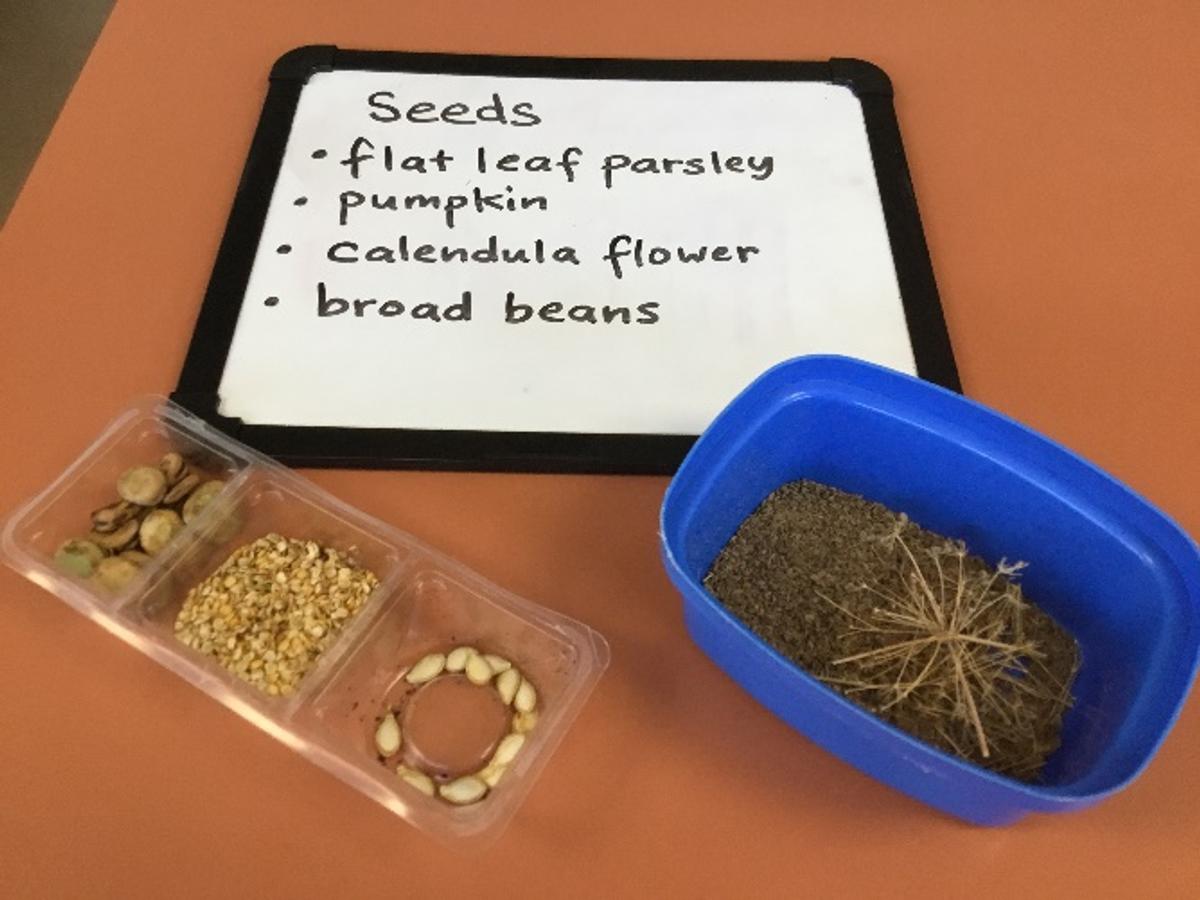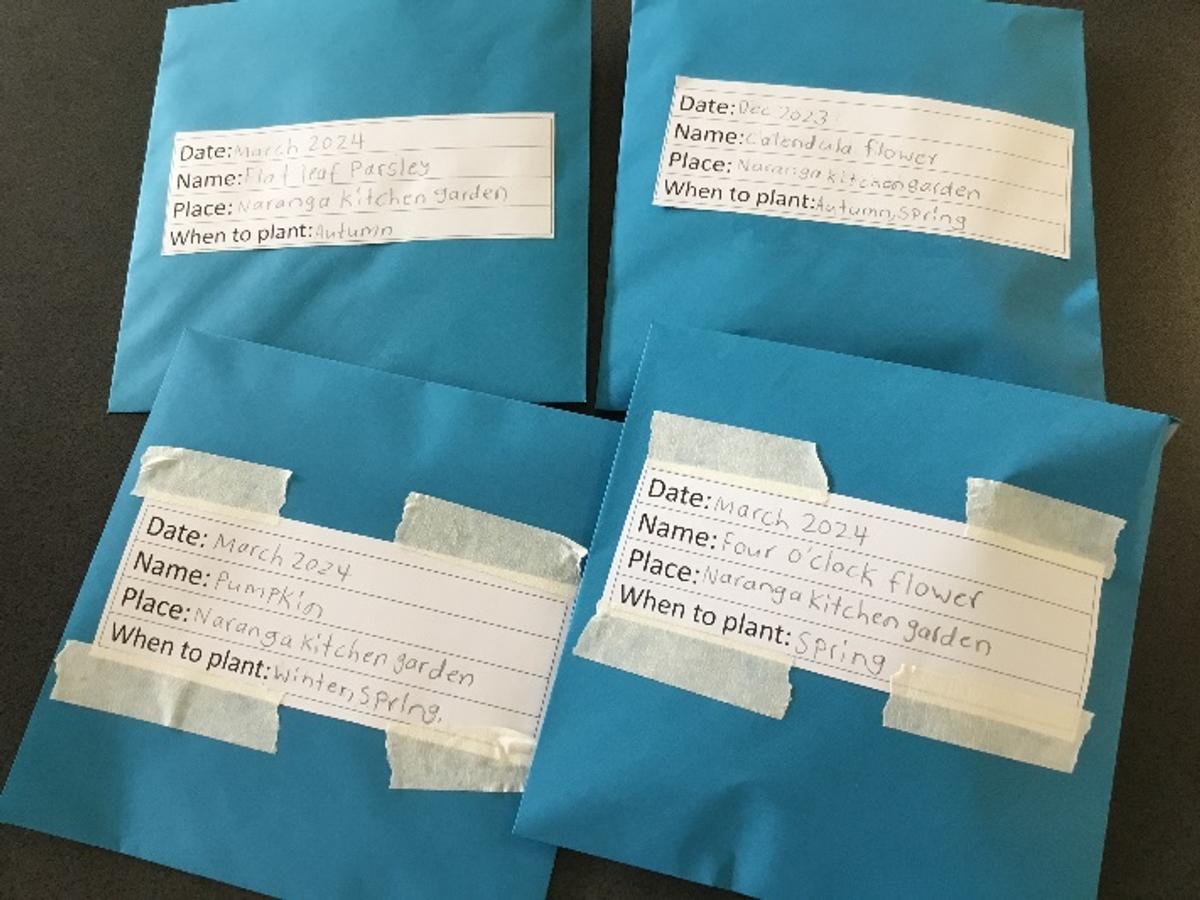The GREEN Page
Sustainability - Community - Action

The GREEN Page
Sustainability - Community - Action


SEED SAVING


Pathways students are learning how to identify plants that have gone to seed and how to collect and save seeds. They have collected flat leaf parsley seeds, pumpkin, four o’clock flower seeds and Calendula flower seeds.
Organic seeds contain more nutrition than other seeds. Each time we save seeds and sow them they adapt better to the climate and grow stronger plants.
HOW DO YOU SAVE SEEDS?
Step 1: Save the strongest plant.
Step 2: Label the plant.
Step 3: Leave the plant to grow so all the energy goes into the seeds.
Step 4: Collect and dry the seeds. Place into a small, sealed bag and then place the seed into a labelled envelope. Record information such as the date collected and name of the plant. Place in a box with dividers of each season and store with other seeds for the same season.
Jude and Michele Fanton of Seed Savers have a comprehensive website www.seedsavers.net that explain what plants you can seed save.
Easy seeds to save include basil, beans, cucumber, dill, marigolds, peas, pumpkin, snow peas, tomato, and watermelon.